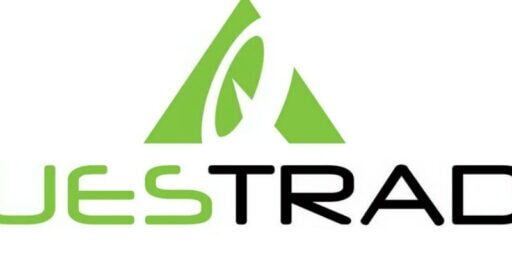Landlord Math – Cap Rate and Return on Investment
This is an article from our regular real estate columnist Rachelle.
Every landlord should know some basic math. There are calculations that are indispensable to the business. I have seen plenty of fast and loose interpretations of these formulas. Remember when you are buying a property the seller is going to try to get creative to minimize expenses while you the buyer must use proper formulas to determine the purchase price for the property.
Capitalization Rate (Cap Rate)
This is probably the most common metric used by investors. Sellers will drastically understate expenses. Ask for copies of original bills. If they refuse just move on and find a more honest seller.
- Gross Operating Income – Expenses = Net Operating Income (NOI)
- Net Operating Income/Purchase Price = Cap rate
Lets talk about expenses. This includes bills such as natural gas, electricity, water and property taxes. This calculation also includes a percentage for maintenance, property management and vacancy allowance. Those expenses are what sellers leave out. This is your safety margin and believe me you will need it at some point.
Sample Cap Rate
A nice example of a Cap Rate calculation can be found here on CMHC’s website.
The only item they are being shy about is the percentage for property management. You should calculate your property management at around 7% in my opinion. All things considered, the calculation is well done.
Deferred Maintenance & Micro Analysis
When deciding what to offer for a property you’ll want to look at deferred maintenance both in the apartments and throughout the building. This is the list of stuff the previous owner should have done but did not.
You’ll also want to know more about the building. Was it a drug den? How do people like living there? Were there three murders in the building two months ago? What is turnover like? Have the tenants been there a long time? How is the street? What is the reputation of the building? For this you’ll have to go back to the area without your real estate agent and knock on some doors.
Cap Rate Reversed
You’ll want to calculate the Cap Rate equation in reverse. This way you can decide how much you want to pay for the building.
- NOI/Cap Rate = Purchase Price
Lets assume you want to achieve a Cap Rate of 8%. You’ll want to plug in all your numbers for expenses to figure out the real Net Operating Income then do the calculation to figure out how much your final purchase price should be.
- $40,000 (NOI) / .08 = $500,000 (Purchase Price)
Cash on Cash Return
This calculation is more complex. Once you have figured out your NOI you calculate this important metric. This measures what the Return on Investment (ROI) will be on the cash used. This is how to operate this calculation.
- NOI – Mortgage payment = Projected annual cash return
- Down Payment + Closing costs + Deferred Maintenance Expense = Cash Outlay
- Projected Annual Cash Return/Cash Outlay = ROI
- Cash Outlay/Projected Annual Cash Return = How long it will take before you get your money back
Buying income property is NOT a POPULARITY CONTEST.
The only reason to buy an income property is to make money. The only way you’ll make money is to buy properly. With income property, it’s all about the cash flow. If you a buy a property without all the safety margin numbers in place, you will end up putting more of your hard earned cash into the property. Month after month, year after year you can look forward to owning a cash-sucking cow of a property.
You should put in offers on property using your analysis. Without offers no one will ever say yes. To do this you’ll need a real estate agent. Lots of real estate agents will not want to put in the offers you want. If you’re serious you might want to respect your real estate agents time by paying him or her something every time you put in an offer. You may have to put in 20 offers before one gets accepted. Why should the real estate agent spend his time and money working with an investor and putting in a bunch of complicated offers when they can go find a nice first time buyer, show them a couple houses and get a sale.
Feel free to show your math to the seller. It’s very likely you aren’t informing them of anything. They want to get as much as possible for their property. Can you blame them? It’s not at all like buying a residential house. These properties are not very liquid and the only thing that matters is the income.
Return on Investment for Improvements
Once you have your property if you’re smart you’ll want to figure out how to increase the income. Every time you increase the income by $50 you’ll increase the value of your building and improve tenant quality.
How much is a $50 per month increase in rent worth to the investor?
- $50 x 12 months = $600
- $600/.08 (Cap Rate)= $7,500 increased value of building
You’ll want to figure out the payback on the improvement. How long will it take to get that money back? Increased building value is great but you don’t get that money unless you refinance or sell the building.
If the improvement is painting the kitchen, putting new handles on it and installing a counter top. This will cost you $800 (assumed).
- $800/$50 = 16 month payback
- $50/$800= 6% ROI
- $7,500 increased value of the building.
Lets try to put the $800 towards a brand new kitchen. The kitchen is 15 years old and beat up. Let’s try and get an extra $100 per month rent. We’ll spend $2000 on our kitchen. (assumed)
- $2000/$100 = 20 month payback
- $100/2000 = 5% ROI
- $15,000 increased value of the building.
The new kitchen is a better investment. At the end of the payback period you have replaced something old with something new that you get to keep. Your building value has increased by $15,000.
Cap Rate Spreadsheet
Editors Note: Due to high demand, I have included Rachelle’s cap rate spreadsheet here.
How to use the Spreadsheet
This is a sample building, a real one, which is not a great investment IMHO.
1 – You will have to figure out your own vacancy rates (which you can find on the CMHC website) it varies with each neighbourhood. Each property will be different and you will have to check up on every one.
2 – You will have to figure out your own property management fee schedule. For smaller buildings it may cost up to 10% while large multiple unit buildings go as low as 3% of gross income
3 – For Maintenance allowance I allow 10% of the gross monthly rent. This should allow for you to turn over suites when they become vacant and save money for improvements and repairs such as roofs.
Deferred maintenance is any maintenance that has not been done previous to your owning the building that needs to be done. This includes ensuite maintenance that is above wear and tear you will have to pay for. For instance, an existing tenant is living in a suite that has a hole in the countertop near the tap. It should have been replaced but has not. When you become the new owner you assume the liability for the repair.
Final Thoughts
I urge every landlord/investor to use these calculations. Owning an income property is not the golden path to riches proclaimed in endless programs, courses and seminars. Like any other business you must make wise investments with solid measurable results. It is easy to spend money you don’t need to on things that don’t need to be done or that don’t return any money. Don’t pay foolish prices for income properties. Money must be respected. The numbers are your friends.
Happy Investing !
About the Author: Rachelle specializes in renting property on behalf of landlords and is the blogger behind Landlord Rescue. She also works with investors to find good investments in Toronto and surrounding areas. Her passion is bringing multi res properties back from the brink and maximizing profitability. Check out some of her other real estate posts on MDJ.
I've Completed My Million Dollar Journey. Let Me Guide You Through Yours!
Sign up below to get a copy of our free eBook: Can I Retire Yet?










I’m pretty sure the mortgage payment amount is calculated incorrectly. It is not accounting for Canadian semi-annual compounding.
Perhaps the spreadsheet is from the US? Either way it should fixed since this is a Canadian article.
Some vendors remove the management fees and vacancy rate from the operation expenses to show higher cap rate , if I discovered this after giving an offer , do you think this should be enough to change my mind especially adding the cost for both will drop the cap rate from 7.3 to 6.5 % ?
Thanks for this spreadsheet. I would like to point out that leasehold improvements are an upfront expense and not an ongoing operating expense. As such, leasehold improvements should not be part of the cap rate calculation.
Hi Mstar,
The calculation is the same, just put 0 where there is no expense. I have no idea why anyone even owns a residential rental property with the tenant friendly laws and lousy returns.
As you mention there may be long term vacancy at different times when the unit turns over with commercial tenancies.
Hi Rachelle,
What about new commercial condo properties, where almost every expense item (TMI plus utils) is handed over to the tenant to pay (these are dtown properties, where there is demand). So, then how do you calculate a proper ROI or cap rate…when expenses are near null. I know there will be some miscellaneous expenses that come up and maybe prop management…but again for commercial retail/office leases…the investment prop seems to run itself most of the time (remember these are new – so very little wear and tear for reparis / maint that would come up in an older unit perhaps).
Can you please comment on these types of properties and how to do the calculations for them…as they seem to good to be true. Only downside i can see is potential long vacancy period to get a quality tenant in there at the beginning…but then its at least 5 yr leases
Thanks for your help!
Dear Jacob,
It sounds like properties where you are now are profitable and feel free to buy as many as you can at those prices. In Toronto, where I am I haven’t seen a property that passes this cap rate spreadsheet for several years. It’s to keep people from making mistakes.
I have been a real estate investor since about 05. I currently have 9 units. I love these sorts of posts if only because they provide another way for me to analyze my investments. This cap rate idea seems overly complicated, though it sounds like a lot of people use it so maybe I am wrong.
I am wondering about the flaws in my personal process. When evaluating a purchase I take the rent and subtract the mortgage(15 year note), taxes, insurance and I allow for 30% of income for vacancy and maintenance. What is left has to give me at least a 20% cash on cash return when compared to the downpayment and closing costs that I put into the purchase. I am in Topeka, KS so maybe property is cheap enough to make this feasable but I use the caprate spread sheet and I feel similar to allowing a bank to tell me what sort of mortgage I can afford. I would never take out as large a loan as they say I can afford and I wouldn’t pay for the properties what the spread sheet said would be profitable.
Any thoughts?
I am new to this arena, so I had to look up the term Cap Rate. For anyone that is interested, I found a good definition here https://realestatemetro.com/real-estate-terms/cap-rate
An investment property should generate adequate rental income with minimal expenses and provide consistent positive cash flow. The biggest mistake investors make is they look for property in markets and locations where prices have been increasing in the recent years rather than looking for property that has intrinsic value, better cash flow and in already excellent condition with roof, plumbing, heating and cooling components that are less than ten years old with enough life span left to minimize major expenditures in next five years.
When deciding on a property, investors should use four important professionals.
First very important professional is an experienced real estate agent to find the right property.
The second important professional is an expert building inspector who can provide a comprehensive property condition assessment.
The third important professional is a smart mortgage broker to find the best suitable financing.
The fourth important professional is a very caring lawyer to look after the legal aspects.
Investors also need a competent accountant to manage the accounting and provide with proper tax advice and a reasonable building contractor to perform the routine maintenance and renovations.
Just because a property is affordable, doesn’t mean it’s a good investment. Investors should have vision, be able to look past the esthetics and look for the necessities around the property to become a prime rental property including parking, laundry and proximity to amenities including public transit. It is always better to have the ability to add value to the property without having to make a major renovation. Investors should look at neighbourhoods that are not yet established, but have all the ingredients to be in the future. If the property is vacant upon possession the investors have the ability to renovate, increase rents, and pick your own tenants. Avoid investment properties without adequate parking.
Dear Keeping People Honest,
You are wrong. Glad to help you out with this issue.
Happy Friday!
Rachelle